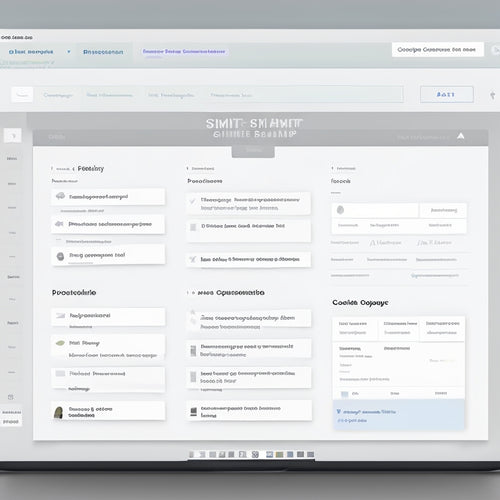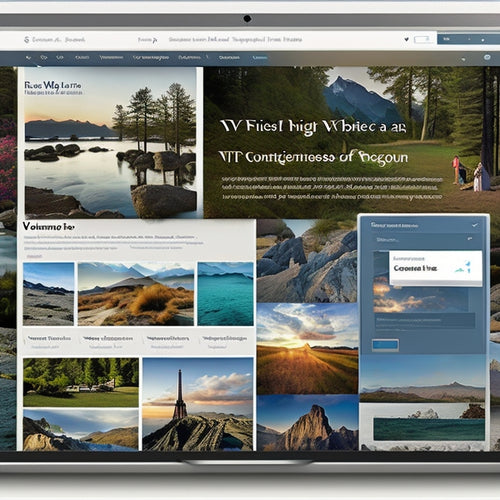
What Segments Matter Most for Online Retailers?
Share
You can boost your online retail business by focusing on the most critical customer segments. Identify high-value customer groups by analyzing demographic, behavioral, and transactional data to uncover patterns and preferences. Demographic segmentation helps tailor marketing efforts to specific age, gender, and income groups. Behavioral segmentation creates highly targeted campaigns based on buying habits and browsing behavior. By prioritizing these segments, you can increase repeat purchases, customer satisfaction, and revenue growth. Now, explore how to apply thesesegmentation strategies to drive business growth and maximize your online retail success.
Key Takeaways
• High-value customer groups, identified through data analysis, are crucial for prioritizing efforts and driving repeat purchases and advocacy.
• Demographic segments, such as age, gender, and income, help tailor marketing efforts and messaging to specific groups.
• Behavioral segments, based on buying habits and purchase history, enable personalized recommendations and targeted marketing campaigns.
• Customer lifetime value segments, categorizing customers by total lifetime spend, prioritize premium treatment for high-value customers.
• Firmographic segments, used in B2B online retail, categorize customers by company characteristics, such as industry and company size, for targeted solutions.
Identifying High-Value Customer Groups
You regularly uncover high-value customer groups by analyzing demographic, behavioral, and transactional data to identify patterns and trends that set them apart from the rest.
This process helps you distinguish your most profitable customers from the rest, enabling you to prioritize efforts on customer retention.
Focusing on high-value customers can substantially impact your bottom line, as they tend to make repeat purchases, leave positive reviews, and advocate for your brand.
Demographic Segmentation Strategies
As an online retailer, you're likely aware that understanding your customers is key to driving sales and growth. Sixty-three percent of online retailers rely on demographic segmentation to divide their customer base into distinct groups based on characteristics like age, gender, income, occupation, and education level. This strategy allows you to tailor your marketing efforts to specific groups, increasing the likelihood of conversion.
To get started, you'll need to conduct market research to gather data on your customers' demographic characteristics. This will help you identify patterns and trends that can inform your customer profiling.
By creating detailed profiles of your ideal customers, you'll be able to develop targeted marketing campaigns that resonate with each group. For instance, if you find that your highest-value customers are mainly young professionals with high incomes, you can tailor your messaging and promotions to appeal to this demographic.
Behavioral Segmentation Insights
Sixty-one percent of online retailers also leverage behavioral segmentation, which involves dividing customers into groups based on their buying habits, purchase history, and browsing behavior, to gain a deeper understanding of their needs and preferences. By doing so, you can create highly targeted marketing campaigns that resonate with your audience. For instance, you can identify customers who frequently purchase from a specific product category and offer them personalized recommendations based on their preferences. This approach helps increase customer satisfaction, loyalty, and ultimately, drives revenue growth.
Behavioral segmentation insights also enable you to identify patterns in customer behavior, such as cart abandonment rates or average order value. You can then use this information to optimize your website's user experience, streamline checkout processes, and implement targeted promotional strategies to boost sales. Additionally, you can analyze browsing behavior to identify areas of interest and tailor your content marketing efforts accordingly.
Purchase History Analysis
Eighty-three percent of customers are more likely to make repeat purchases when their previous buying behavior is taken into account, making purchase history analysis an essential component of behavioral segmentation. By examining your customers' past purchases, you can identify patterns and preferences that inform targeted marketing strategies. This analysis also enables you to develop predictive models that anticipate future purchases, allowing you to proactively offer personalized promotions and recommendations.
| Analysis Type | Description | Benefits |
|---|---|---|
| Market Basket Analysis | Analyzes items frequently purchased together | Identifies cross-selling opportunities and optimizes product placement |
| Product Affinity Analysis | Examines products often bought by the same customers | Reveals product relationships and informs product recommendations |
| Purchase Sequence Analysis | Studies the order in which products are purchased | Identifies buying habits and enables targeted promotions |
| Latency Analysis | Investigates time between purchases | Helps optimize re-engagement campaigns and loyalty programs |
Customer Lifetime Value Segments
By categorizing customers based on their total lifetime spend, you can create Customer Lifetime Value (CLV) segments that reveal high-value customers who deserve premium treatment and loyalty investments. This segmentation strategy allows you to identify and prioritize customers who contribute significantly to your revenue.
By analyzing CLV, you can predict which customers are likely to make future purchases, enabling you to tailor your marketing efforts and resource allocation accordingly. This data-driven approach enables accurate revenue prediction, helping you make informed decisions about where to invest your time and resources.
CLV segments also help you identify customers at risk of churn, allowing you to develop targeted retention strategies to prevent losses. By focusing on high-value customers, you can increase customer retention rates and reduce the costs associated with acquiring new customers.
Product Affinity Clustering
You can uncover hidden patterns in customer behavior by applying Product Affinity Clustering, a technique that groups customers based on their product preferences and purchasing habits. This clustering analysis helps you identify customer segments that share similar tastes and buying patterns, allowing you to tailor your marketing strategies to specific groups.
By analyzing customer purchase history and product preferences, you can create targeted campaigns that resonate with each segment.
Product Affinity Clustering is closely related to market basket analysis, which examines the products customers buy together. By combining these two techniques, you can identify cross-selling opportunities and develop personalized product recommendations.
For instance, if you notice that customers who buy product A often buy product B, you can create a targeted promotion offering a discount on product B to customers who've purchased product A.
Geographic Customer Segments
As you navigate the online retail landscape, understanding your customers' geographic profiles is essential. How do geographic boundaries influence your customers' purchasing habits and preferences? The answer lies in recognizing that different regions have distinct needs, preferences, and behaviors.
For instance, customers in urban areas tend to prioritize convenience and speed, while those in rural areas value affordability and reliability.
By segmenting your customers geographically, you can tailor your marketing strategies to penetrate specific markets more effectively. Conducting a competitive analysis of your rivals' geographic strengths and weaknesses can also reveal opportunities for market penetration.
For example, if a competitor dominates the east coast, you may focus on expanding your presence on the west coast.
Geographic customer segments can also inform your product offerings, pricing, and shipping strategies. By analyzing regional sales data, you can identify top-selling products, optimize inventory levels, and adjust shipping routes to reduce costs and improve delivery times.
Psychographic Segmentation Benefits
Delving into psychographic segmentation reveals a treasure trove of benefits, including the ability to tap into customers' values, attitudes, and lifestyles to craft targeted marketing campaigns that resonate deeply. By understanding what drives your customers' consumer behavior, you can create personalized marketing strategies that speak directly to their needs and preferences. This approach allows you to tailor your messaging, product offerings, and customer experiences to specific psychographic segments, increasing the likelihood of conversion and loyalty.
For instance, if you're an outdoor apparel brand, you might identify a psychographic segment of customers who value sustainability and eco-friendliness. You can then develop marketing campaigns that highlight your brand's commitment to environmentally responsible practices, resonating with this segment's values and attitudes. By doing so, you'll be more likely to attract and retain customers who share these values, driving long-term growth and profitability.
Firmographic Segmentation for B2B
Firmographic segmentation empowers B2B online retailers to categorize customers based on company characteristics, such as industry, company size, and job function, allowing for tailored marketing strategies that speak directly to their business needs. This type of segmentation is particularly useful for B2B online retailers, as it enables them to understand their customers' business requirements and develop targeted solutions.
By conducting industry analysis, you can identify key trends and patterns within your target market. This information can be used to create targeted marketing campaigns that resonate with your audience.
Here are three ways firmographic segmentation can benefit your B2B online retail business:
-
Improved customer understanding: Firmographic segmentation provides valuable insights into your customers' business needs, allowing you to develop targeted solutions that meet their specific requirements.
-
Enhanced marketing efficiency: By targeting specific industries and company sizes, you can reduce marketing waste and increase the effectiveness of your campaigns.
-
Increased revenue potential: Firmographic segmentation enables you to identify high-value customers and develop targeted strategies to win their business.
Tailoring Experiences to Segments
By recognizing the unique needs and preferences of each segment, you can tailor the online shopping experience to meet the distinct requirements of your customers, driving loyalty and ultimately, revenue growth.
To achieve this, you'll need to develop personalization strategies that cater to each segment's preferences. For instance, you can use customer engagement tactics such as targeted promotions, product recommendations, and loyalty programs to enhance the shopping experience.
Here are some examples of how you can tailor experiences to specific segments:
| Segment | Tailored Experience |
|---|---|
| High-value customers | Priority customer support, exclusive offers, and early access to new products |
| Frequent buyers | Loyalty rewards, personalized product recommendations, and streamlined checkout |
| New customers | Welcome offers, educational content, and simplified navigation |
| Price-sensitive customers | Discounts, price comparisons, and budget-friendly product options |
| Abandoned cart customers | Cart reminders, special offers, and easy checkout recovery |
Frequently Asked Questions
How Often Should I Update and Refine My Customer Segmentation Strategy?
You should update your customer segmentation strategy quarterly, incorporating fresh customer feedback to refine targeting. Monitor segmentation ROI to optimize frequency, and be prepared to pivot when targeting new markets to maximize returns.
Can I Use Customer Segmentation for Both Online and Offline Channels?
"As you navigate the retail landscape, consider the torch of consistency lighting the way: yes, you can use customer segmentation for both online and offline channels through seamless cross-channel integration and omnichannel strategies that unify your brand's voice."
What Are the Most Effective Metrics for Measuring Segmentation Success?
You'll measure segmentation success by tracking customer engagement, conversion rates, and market trends. Analyze competitor performance to refine your strategy, and use data to optimize your approach, driving growth and revenue.
How Do I Balance Personalization With Customer Data Privacy Concerns?
You'll need to strike a balance between personalization and data privacy by prioritizing trust-building measures, ensuring robust data protection, and delivering seamless customer experiences that address privacy concerns, ultimately driving loyalty and growth.
Can AI and Machine Learning Replace Human Judgment in Segmentation Analysis?
You think AI and machine learning can replace human judgment? Please, you're not that fortunate. AI can process data, but it's only as good as the data accuracy, and let's be real, humans are still needed to ponder ethical implications.
Related Posts
-
The Impact of Video Shopping on E-commerce Sales
In the ever-evolving world of e-commerce, new technologies and strategies emerge to enhance the shopping experience ...
-

Does Shopify Automatically Submit a Sitemap
This article examines the functionality of Shopify in relation to automatic sitemap submission. The focus is on the ...
-

What Are the Benefits of Creating a Sitemap
The benefits of creating a sitemap have been widely recognized in the field of search engine optimization (SEO). Sit...

